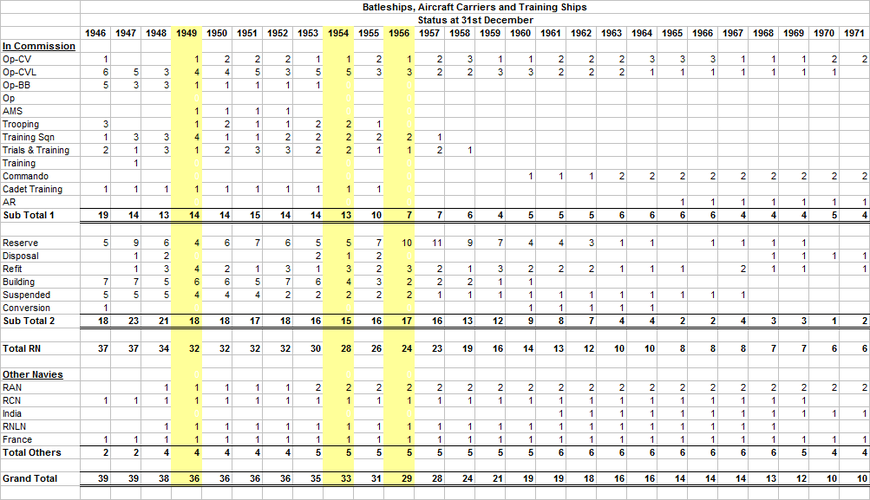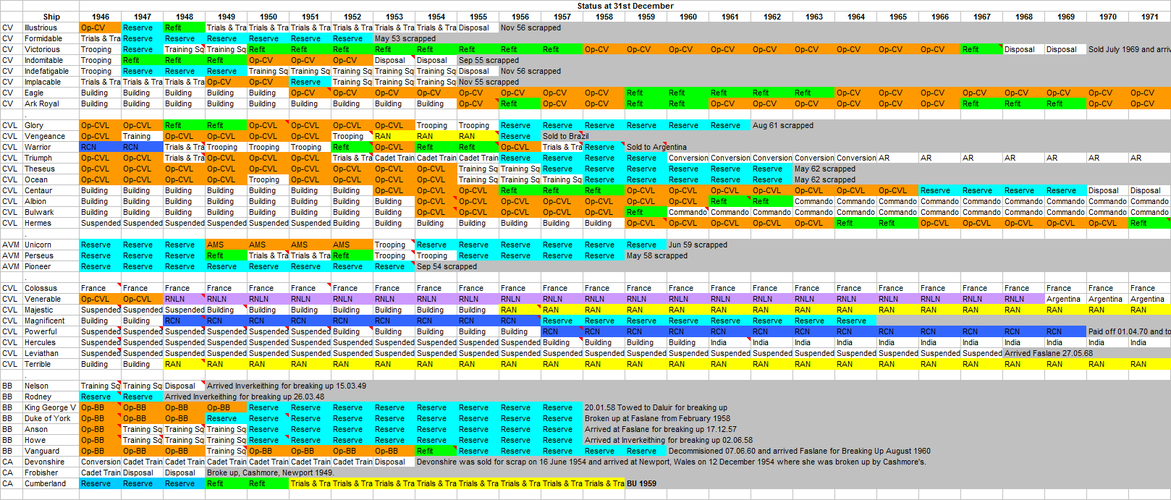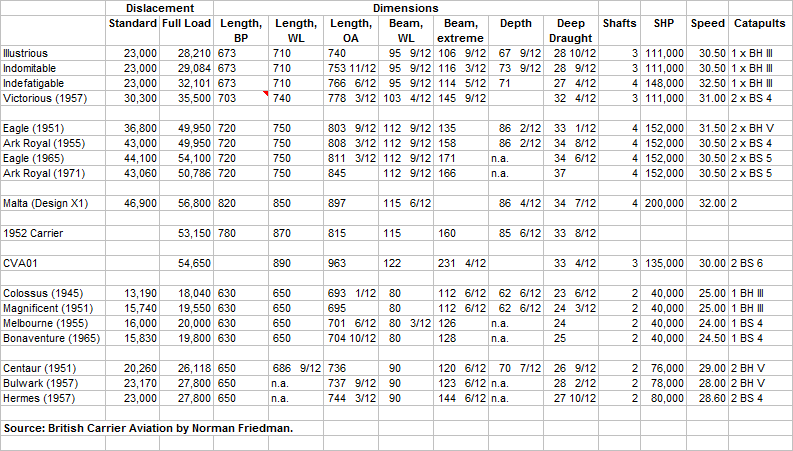- Joined
- 22 April 2012
- Messages
- 2,318
- Reaction score
- 1,837
To pick up on the Majestic/Colossus with Seamew and/or Type 191 aspect again. In the 1950s there were multiple carriers involved in various trials and training roles:
Dartmouth Training ship: Triumph replaced the cruiser Devonshire in 1953 but was retired in 1955 without replacement
Home Fleet Training Squadron: Two carriers, Implacable and Indefatigable from 1951 to 1955 when they were replaced by Ocean and Theseus (actually used as helicopter carriers during Musketeer)
Trials and Training Carrier: One carrier, Illustrious, then Bulwark and then Warrior with the role abolished in 1957
Carriers in the reserve fleet, (e.g. Indomitable, Implacable and Indefatigable from 1955) tended to be in class III status, de-stored and and at extended notice on the basis they had serious defects or required significant work to be useful. As such, class III was a sort graveyard status where ships deteriorated until they were sold for breaking.
The RNVR squadrons and their Seamews, Gannets, Attackers and Sea Hawks would, on mobilisation, have embarked on the three to four carriers active in the trials and training roles, until the RNVR was abolished and its squadrons disbanded in 1957.
Dartmouth Training ship: Triumph replaced the cruiser Devonshire in 1953 but was retired in 1955 without replacement
Home Fleet Training Squadron: Two carriers, Implacable and Indefatigable from 1951 to 1955 when they were replaced by Ocean and Theseus (actually used as helicopter carriers during Musketeer)
Trials and Training Carrier: One carrier, Illustrious, then Bulwark and then Warrior with the role abolished in 1957
Carriers in the reserve fleet, (e.g. Indomitable, Implacable and Indefatigable from 1955) tended to be in class III status, de-stored and and at extended notice on the basis they had serious defects or required significant work to be useful. As such, class III was a sort graveyard status where ships deteriorated until they were sold for breaking.
The RNVR squadrons and their Seamews, Gannets, Attackers and Sea Hawks would, on mobilisation, have embarked on the three to four carriers active in the trials and training roles, until the RNVR was abolished and its squadrons disbanded in 1957.
Last edited:



